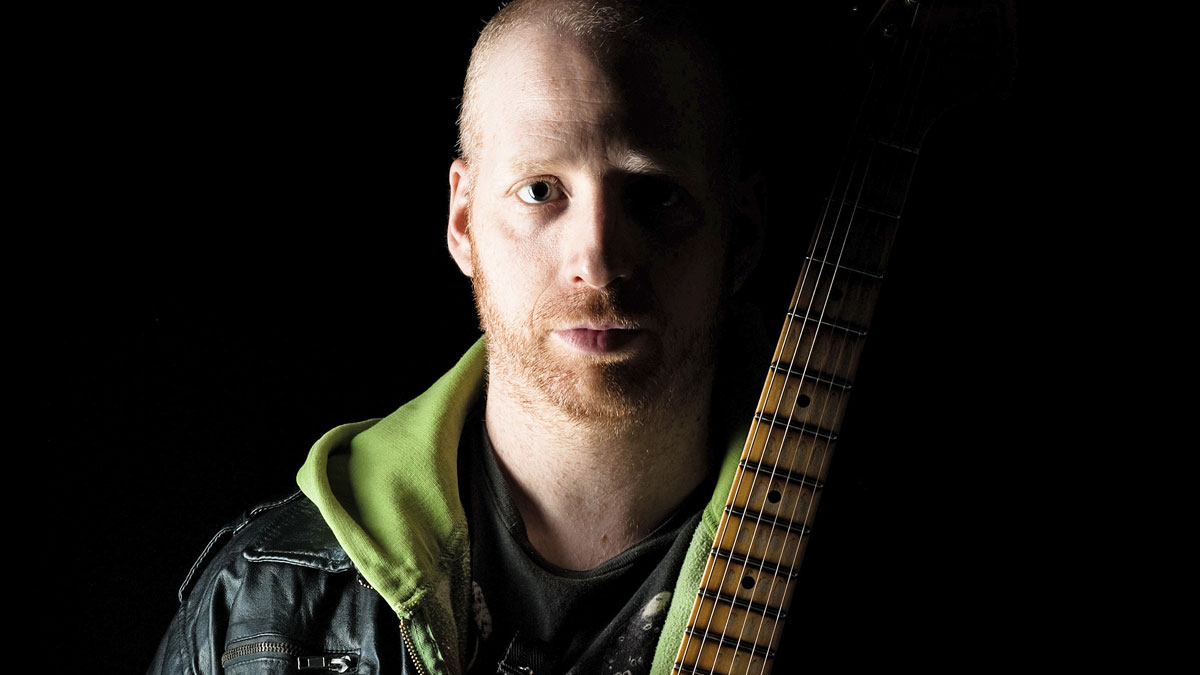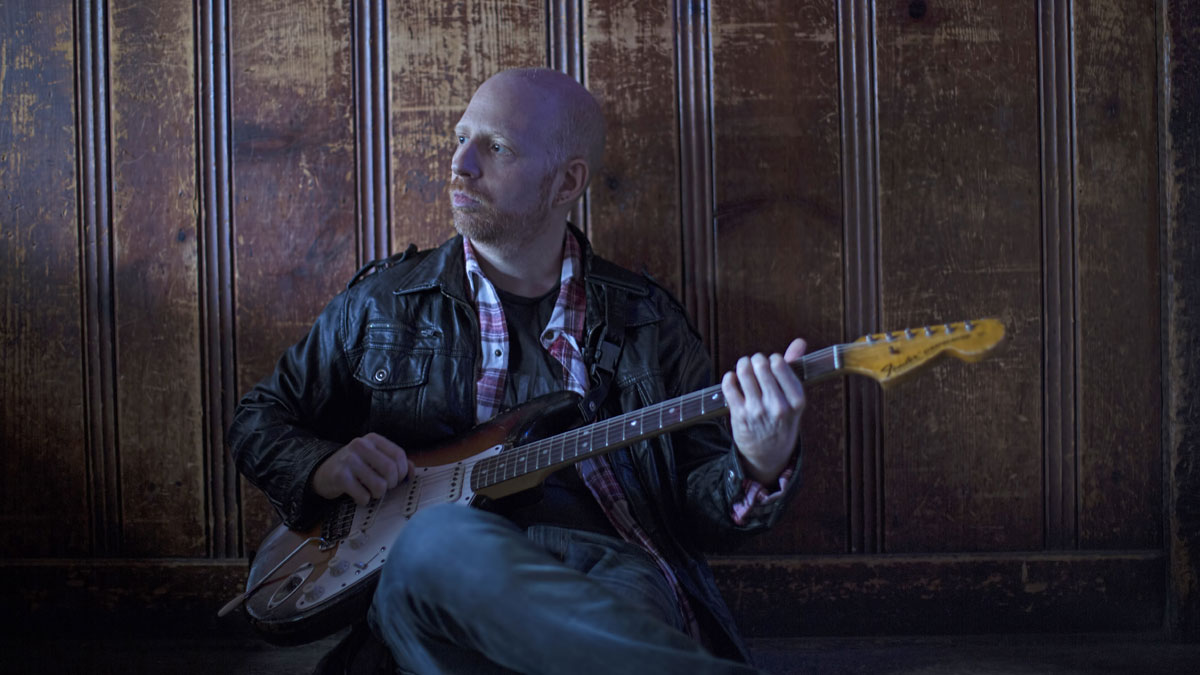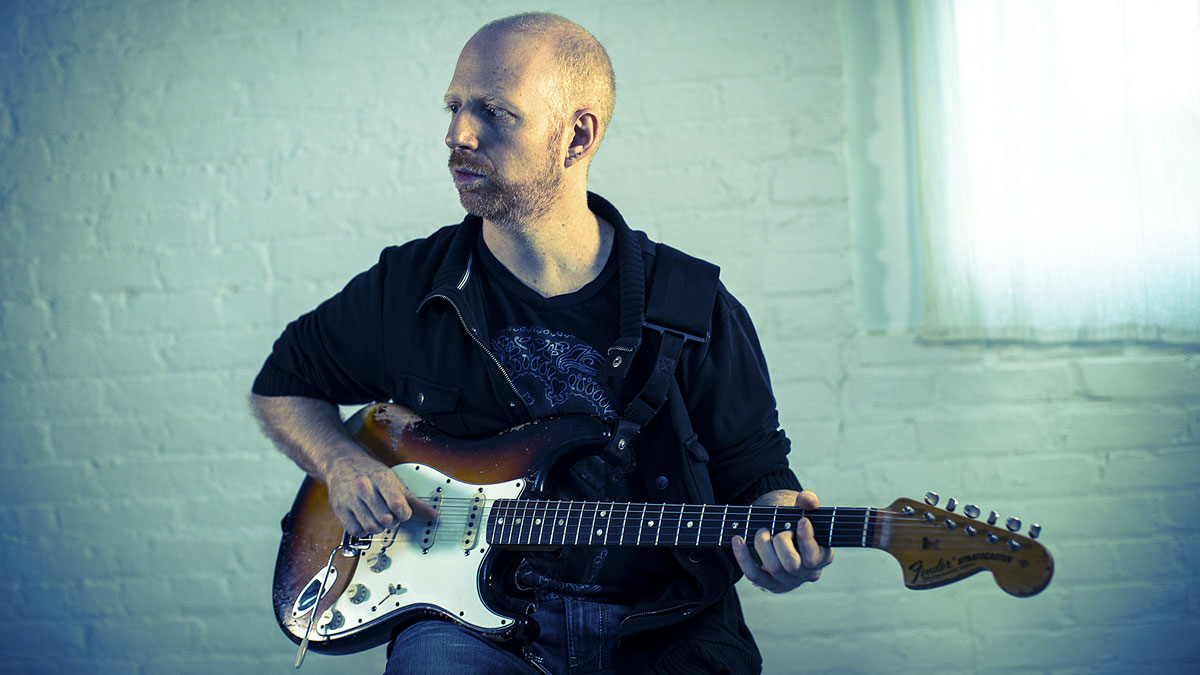Oz Noy talks technique, tours and Two-Rock
We examine the wizardry of Oz

Introduction
With enough accolades to stun a moderate-sized ox, Oz Noy is taking the blues and jazz guitar world by storm. We talk to him about touch, tone, technique and the rig he needs to pound out his fusion message to the world.
Oz Noy has the full deck of virtues: a player who has great feel, but articulates assertively and precisely
Every now and then, you come across a guitarist who has the full deck of virtues: a player who has great feel, but articulates assertively and precisely; who has great creativity, but also the theoretical grasp to give structure and clarity to improvisations. They’re rare, but Oz Noy is such a one.
Born in Israel, Oz moved to New York in 1996 and immediately started turning heads. Pretty soon, he’d notched up a rack of critically acclaimed albums, including his debut Oz Live!, which was recorded at New York’s legendary Bitter End.
Subsequent releases included the Twisted Blues series, which featured Oz’s unique cocktail of bebop and blues. Since then, he’s toured the world, become recognised as one of the guitar’s rising stars, and been hailed as a virtuoso by all who hear him play.
We caught up with him just as another live album hit the shelves - with a jazz-fusion power trio comprising Dave Weckl on drums and Etienne Mbappe on bass, recorded during a recent tour of Japan. But let’s start at the beginning: we asked Oz about his early influences - who first inspired him to pick up the instrument?
“When I started, it was The Beatles, but then my brother started to bring jazz home, so I began to listen. There was some John McLaughlin, some Joe Pass - stuff like that, from what I remember. As I got a little older, I was into Pat Metheny, who was a big influence in terms of everything he did, and then all the modern jazz guys like Scofield, Stern and Bill Frisell.
The one major moment in my life that made the biggest impact on me was seeing the Pat Metheny Group in Israel
“I was listening to rock also: people like Hendrix, Stevie Ray Vaughan, Jeff Beck and Eric Johnson. Some of the rock guys, the shredders, had a really big influence on me at the same time, and so it wasn’t only jazz - it was both things together.”
If you had to name three breakthrough moments in your development as a guitarist, what would they be?
“The one major moment in my life that made the biggest impact on me was seeing the Pat Metheny Group in Israel in the 80s when the Still Life (Talking) record came out. I saw him playing with a group and then I saw him in a small club playing with a trio.
“He really opened up the sound of the guitar in jazz. He’s just incredible. Believe it or not, the thing that I like the most about him is his solo playing. When he plays solo guitar, to me that’s untouchable.
“At the same time, Chick Corea’s Elektric Band record came out, which had Scott Henderson on it, and I kind of got turned on to Allan Holdsworth as well. That era was a big influence on me and, just a little after that, I met a teacher in Israel who used to be the piano player Barry Harris’s bassist. He got me heavily into bebop: Charlie Parker, Wes Montgomery and all that kind of stuff.”

Rig rundown
Could you walk us through the rig that you might take to an average date in your touring and gigging schedule?
“I have a Two-Rock amp and a Marshall, either of those two. I bring one of my pedalboards; I have a few different pedalboards depending on what kind of music I’m playing. I’ve got one for blues and vintage stuff, and then I have one that’s a little more modern that I usually use for session work or my music from older records. But it’s all basically the same stuff: I usually bring a Strat and a Tele, one of my pedalboards, and one of those amps.
I have one pedalboard that I usually travel with that covers everything I need
“When I’m on tour, I just bring one guitar because the travelling thing is problematic, so I’ll bring a Strat. I have one pedalboard that I usually travel with that covers everything I need, and then I’ll just get rental - usually two amps, either two Fenders or two Vox AC30s will do the trick.”
What particular models are the Two-Rock and Marshall?
“The Two-Rock is a Gain Master 100. Actually, I have two of those: one of them is slightly modified, but they’re pretty much stock with the 2x12 cabinets. The Marshall is a 50-watt ’73 Marshall and a 4x12 cabinet with Greenbacks in it.”
Players such as Jim Campilongo swear by playing through small amps to access a different tone at club date volume. You’ve got slightly more headroom with your amps…
“They’ve much more headroom! I don’t play with a lot of gain but I get all my solo lead tones out of pedals. I actually need my amps to be loud and clean, but not too clean. The way I get my sound is I turn the amp up so it’s kind of compressed and on the verge of starting to saturate a little bit. Then I put the pedal into it and it makes it sound really nice and alive and compressed.
I can’t play through a small amp because it’s going to break up really quick. I need the headroom, I need the volume
“I can’t play through a small amp because it’s going to break up really quick. I need the headroom, I need the volume. The way I get my sound is by playing loud.”
What drive pedals do you rate?
“If everything works as planned and the amps react the way I want them to, then all I need is any type of booster, like either the Xotic RC Booster or the TS808 Tube Screamer.
“Often when I tour, I don’t use my own amps, so the amps don’t react exactly the way I want them to. Sometimes they sound a little too cold or don’t break up as much as I need them to. I pretty much use the Xotic RC Booster the whole time to make the amp sound better and feel a little more compressed or reactive. That’s all it is. I use a [Fulltone] Octafuzz sometimes, but that’s a different kind of sound.”

Gain playground
So what you’re trying to achieve is this nice playground of slight gain but enough definition to get your point across there?
“Correct. I don’t play with a lot of gain. To me, sounds that are saturated sound really small. The only guys that do it really well are Jeff Beck, Eric Johnson and Scott Henderson, but a lot of those really heavy saturated guitar sounds sound kind of small and you can’t hear the guitar and the attack well.”
What do you find most challenging about the guitar?
If you want to extend your harmonic and melodic vocabulary, you have to study jazz, you have to study music
“That’s a hard question to answer. It’s endless - music is endless. There are so many different styles, from fingerpicking to classical to jazz to rock. I wish there was more time in the day to practise and get that all in, but it’s impossible. You just have to focus on a few things and do them as well as you can.”
Moving on to your writing and the Twisted Blues albums - how did that concept emerge?
“I had the idea for years before I recorded those records. I was always into blues and I had this idea of taking blues forms and opening them up in my own style. I did three studio albums: Ha!, Fuzzy and Schizophrenic, and also I did my first live album. They’re all groove oriented and more funk and R&B based, I would say. It was basically taking different forms of the blues and opening them up harmonically and rhythmically.”
You’re playing outside a fair amount of the time on the those records…
“Here’s the thing with my playing: it’s been like that on all my records. My playing is basically a mix of bebop and blues. If you want to extend your harmonic and melodic vocabulary, you have to study jazz, you have to study music, and there are a bunch of different scales in jazz that are more exotic sounding. Then when you start playing with those, you learn the language of jazz - which is bebop - and then you learn the language of blues. Then all of that together becomes something; I don’t know, in my case it became what I do.
The more rhythmical you are with your playing, the more musical it’s going to sound
“I have an instructional DVD on JazzHeaven.com that is teaching exactly that. It’s two and a half hours where I break down everything I do - all the scales and the options - but I do it over a blues. You have to study a little bit; there are no shortcuts, that’s the bottom line.”
If you had a couple of pieces of advice for a beginner on how to play a good solo, what would they be?
“Know your scales and be aware of rhythm. If you know the scale that you’re going to play over a blues - a pentatonic scale, for instance - know it all over the guitar, everywhere. That would be the first thing. The second part would be the rhythmic aspect of music: the more rhythmical you are with your playing, the more musical it’s going to sound. I think those are the two basic things that I would try to get somebody to focus on.”

Vocal guitarist
What would you say to people who are trying to find their voice on electric guitar?
“My main advice is that you have to go through the process of copying and studying the language. I don’t know if you can do it without it. If you want to have your own voice as a jazz musician, you have to study bebop and in order to study bebop, you have to study Charlie Parker and Wes Montgomery and those guys. All the modern jazz players like Pat Metheny or Scofield will all tell you the same thing: that they were pretty heavily into bebop and they still are.
You have to go to the roots of the music and learn the language: you have to study BB King, Freddie King, Albert King - all those guys
“It’s the same thing if you want to play rock or blues. You have to go to the roots of the music and learn the language: you have to study BB King, Freddie King, Albert King - all those guys. You shouldn’t be afraid to do that because by studying you’ll be able to find your own voice.”
You’ve taken some inspiration from Allan Holdsworth. When we were speaking to Guthrie Govan, he felt that Holdsworth was almost in a category of one. What did you take from his playing? What did you find interesting that you could apply in your own creativity?
“I don’t know, he’s just his own thing. I don’t know how he did it, he was just born with some other stuff because his thing doesn’t come from bebop or from blues, it just comes from his brain. Of course, the technical aspect of it is extraordinary, but, to me, the thing that makes it the most appealing is that it’s harmonically and melodically extraordinary.”
You spend a lot of time in New York; who do you admire among the people who are doing interesting work in jazz and blues?
“One guy that I wasn’t aware of until I moved there was Wayne Krantz and he’s a very important guy to me. There are a bunch of younger guys who play jazz that are extraordinary, like Nir Felder and Mike Moreno and, of course, Adam Rogers and Kurt Rosenwinkel. I love all those guys, they’re very inspiring to me.
“In terms of blues and rock guys, I don’t know if that really exists in New York. The one guy that I really like is Jon Herington who came from jazz and plays with Steely Dan. New York is more of a jazz town to me. There’s not much blues or funk there, but people can mix things together like I do. In my opinion, a lot of it is getting mixed more from the angle of jazz. It’s like jazz musicians do stuff that’s a little different.”
So where have you been playing recently?
I play in New York every week at a club called The Bitter End; I’ve been doing it for years and years and years
“Just recently, I released a live album called Asian Twistz. The story behind it is I had a tour in Asia last September with Dave Weckl and Etienne Mbappe, and Dave recorded a couple of the shows, so we ended up getting a really nice live album out of that.
“I did a European tour where I played Ronnie Scott’s to support that record - that was back in April. Then I did some dates on the USA’s east and west coasts right after, and for the rest of the summer I’m going to work on recording. I have another album that’s almost ready to be recorded. The way I do it is I play in New York every week at a club called The Bitter End; I’ve been doing it for years and years and years. So I write and then I bring the music to the bandstand and we play it for a couple of weeks or months before I go in and record. That’s what I’ll do over the summer.”
Oz Noy’s live album Asian Twistz is out now on Abstract Logix records. For info on tour dates see his website www.oznoy.com
Jamie Dickson is Editor-in-Chief of Guitarist magazine, Britain's best-selling and longest-running monthly for guitar players. He started his career at the Daily Telegraph in London, where his first assignment was interviewing blue-eyed soul legend Robert Palmer, going on to become a full-time author on music, writing for benchmark references such as 1001 Albums You Must Hear Before You Die and Dorling Kindersley's How To Play Guitar Step By Step. He joined Guitarist in 2011 and since then it has been his privilege to interview everyone from B.B. King to St. Vincent for Guitarist's readers, while sharing insights into scores of historic guitars, from Rory Gallagher's '61 Strat to the first Martin D-28 ever made.


